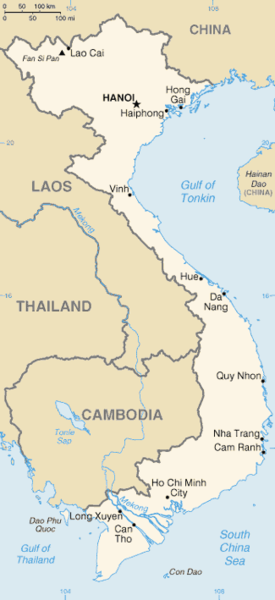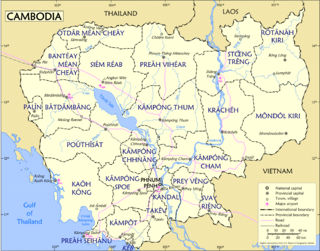Related Research Articles

Sex trafficking is human trafficking for the purpose of sexual exploitation. It has been called a form of modern slavery because of the way victims are forced into sexual acts non-consensually, in a form of sexual slavery. Perpetrators of the crime are called sex traffickers or pimps—people who manipulate victims to engage in various forms of commercial sex with paying customers. Sex traffickers use force, fraud, and coercion as they recruit, transport, and provide their victims as prostitutes. Sometimes victims are brought into a situation of dependency on their trafficker(s), financially or emotionally. Every aspect of sex trafficking is considered a crime, from acquisition to transportation and exploitation of victims. This includes any sexual exploitation of adults or minors, including child sex tourism (CST) and domestic minor sex trafficking (DMST).

Human trafficking is the trade of humans for the purpose of forced labour, sexual slavery, or commercial sexual exploitation. Human trafficking can occur within a country or trans-nationally. It is distinct from people smuggling, which is characterized by the consent of the person being smuggled.

In the United States, human trafficking tends to occur around international travel hubs with large immigrant populations, notably in California, Texas, and Georgia. Those trafficked include young children, teenagers, men, and women; victims can be domestic citizens or foreign nationals.
Rates of crime in Guatemala are very high. An average of 101 murders per week were reported in 2018. The countries with the highest crime and violence rates in Central America are El Salvador and Honduras. In the 1990s Guatemala had four cities feature in Latin America's top ten cities by murder rate: Escuintla, Izabal (127), Santa Rosa Cuilapa (111) and Guatemala City (101). According to New Yorker magazine, in 2009, "fewer civilians were reported killed in the war zone of Iraq than were shot, stabbed, or beaten to death in Guatemala," and 97% of homicides "remain unsolved." Much of the violent nature of Guatemalan society stems back to a 36-year-long civil war However, not only has violence maintained its presence in the post-war context of the country following the Guatemalan Civil War, but it has extended to broader social and economic forms of violence.
Human trafficking is an act of recruiting, transporting, and harboring people against their will; usually by using force. People who are trafficked are mostly used for sexual purposes or illegal work. These acts include: forced marriages, trafficking for human organs, and gaining members for organized crimes. Every country in the world deals with this crime, and are usually classified as transit countries, target countries, or source countries. Guatemala is a part of North America, which is a target country; this means they contain human trafficking victims.
Human trafficking is the trade of humans, most commonly for the purpose of forced labour, sexual slavery, or commercial sexual exploitation for the trafficker or others. Mexico is a large source, transit, and destination country for victims of human trafficking.

Human trafficking in Texas is the illegal trade of human beings as it occurs in the state of Texas. It is a modern-day form of slavery and usually involves commercial sexual exploitation or forced labor, both domestic and agricultural.

Human trafficking in California is the illegal trade of human beings for the purposes of reproductive slavery, commercial sexual exploitation, and forced labor as it occurs in the state of California. Human trafficking, widely recognized as a modern-day form of slavery, includes
"the recruitment, transportation, transfer, harboring or receipt of persons by means of threat or use of force or other forms of coercion, of abduction, of fraud, of deception, of the abuse of power, or of a position of vulnerability or of the giving or receiving of payments or benefits to achieve the consent of a person having control over another person, for the purpose of exploitation. Exploitation shall include, at a minimum, the exploitation of prostitution of others or other forms of sexual exploitation, forced labor services, slavery or practices similar to slavery, servitude or the removal of organs."

Sex trafficking in the United States is a form of human trafficking which involves reproductive slavery or commercial sexual exploitation as it occurs in the United States. Sex trafficking includes the transportation of persons by means of coercion, deception and/or force into exploitative and slavery-like conditions. It is commonly associated with organized crime.
Human Trafficking or "trafficking in persons" is the recruiting, harboring, transporting, providing, or obtaining a person for mainly the purposes of forced labor or prostitution. Other reasons for human trafficking are the removal of organs, forced marriage, and other exploitations. South America is one of the biggest source and destination locations in the world and has struggled with the issue for many years. The ILO estimates that of the 20.9 million victims of human trafficking in 2012, 1.8 million were from Latin America. There are many factors that cause human trafficking, like a high demand for domestic servants, sex laborers, and factory workers, the existence of already established trafficking networks that often take advantage of young women and children, corruption in the governments and local law enforcement agencies, a governmental disinterest in the issue and a lack of opportunity for women in South American regions where trafficking occurs. People exploited in human trafficking are often impoverished, members of indigenous peoples, unemployed, victims of abuse, illiterate, substance users, homeless, or involved in gang activity. Research by the United States Department of State has also found that LGBTQ+ and transgender people are vulnerable to human trafficking. By far, sex trafficking is the leading type of human trafficking, making up 79 percent of all human trafficking. This is then followed by forced labor at 18 percent. About 20 percent of trafficking victims are children. Primary destinations for trafficking and illegal immigration are the United States, Spain, Britain, Italy, the Netherlands, Portugal, and Canada. Globalization, capitalism and societal attitudes facilitate and reduce the barriers to human trafficking.
Sex trafficking in China is human trafficking for the purpose of sexual exploitation and slavery that occurs in the People's Republic of China. China, the world's second-most populous country, has the second highest number of human trafficking victims in the world. It is a country of origin, destination, and transit for sexually trafficked persons.
Sex trafficking in Myanmar is human trafficking for the purpose of sexual exploitation and slavery that occurs in the Republic of the Union of Myanmar. Myanmar is primarily a source and transit country for sexually trafficked persons.

Sex trafficking in Vietnam is human trafficking for the purpose of sexual exploitation and slavery that occurs in the Socialist Republic of Vietnam. Vietnam is a source and, to a lesser extent, destination country for sexually trafficked persons.
Sex trafficking in Laos is human trafficking for the purpose of sexual exploitation and slavery that occurs in the Lao People's Democratic Republic. Laos is primarily an origin country for sexually trafficked persons.
Women in the Mexican drug war have been civilians and participants. Since the beginning of the Mexican Drug War in 2006, female civilians, both Mexican citizens and foreigners, have been victims of extortion, rape, torture, and murder, as well as forced disappearance, by belligerents on all sides. Citizens and foreign women and girls have been sex trafficked in Mexico by the cartels and gangs. The criminal organizations, in turn, use the profits to buy weapons and expand. They have harmed and carried out sexual assault of migrants from Latin America to the United States. The violence against women in the drug war has spread beyond Mexico to bordering and nearby countries in Central America and North America. The number of women killed in the conflict is unknown because of the lack of data. Women officials, judges, lawyers, paralegals, reporters, business owners, social media influencers, teachers, and non-governmental organizations directors have also been involved in the conflict in different capacities. There have been female combatants in the military, police, cartels, and gangs. Women have lost loved ones in the conflict.

Sex trafficking in Cambodia is human trafficking for the purpose of sexual exploitation and slavery that occurs in the Kingdom of Cambodia. Cambodia is a country of origin, destination and transit for sex trafficked persons.

Sex trafficking in Mongolia is human trafficking for the purpose of sexual exploitation and slavery that occurs in the country. Mongolia is a source, transit and destination country for sexually trafficked persons.

Cybersex trafficking, live streaming sexual abuse, webcam sex tourism/abuse or ICTs -facilitated sexual exploitation is a cybercrime involving sex trafficking and the live streaming of coerced sexual acts and/or rape on webcam.

Sex trafficking in Guatemala is human trafficking for the purpose of sexual exploitation and slavery that occurs in the Republic of Guatemala.

Sex trafficking in El Salvador is human trafficking for the purpose of sexual exploitation and slavery that occurs in the Republic of El Salvador. It is a country of origin, transit, and destination for sexually trafficked persons.
References
- 1 2 3 "What is Modern Slavery? - United States Department of State". U.S. Department of State. the Office of Inspector General. Retrieved 8 March 2021.
- 1 2 3 4 "Trafficking in Women and Girls and the Fight to End it". Latin American Bureau. November 26, 2014.
- 1 2 "Tenancingo: the small town at the dark heart of Mexico's sex-slave trade". The Guardian. April 4, 2015.
- 1 2 3 4 5 Murray, Christine (22 January 2020). "Mexico human trafficking cases rise by a third but many states found lagging". Reuters. Reuters. Retrieved 15 March 2021.
- 1 2 "DOJ: Mexican Sex Trafficking Organization Uses Southern Border to Smuggle Victims". People's Pundit Daily. January 7, 2019.
- ↑ "Human trafficking survivors find hope in Mexico City". Deseret News. July 17, 2015.
- 1 2 3 "Hiding in plain sight, a hair salon reaches Mexican trafficking victims". The Christian Science Monitor. April 12, 2016.
- 1 2 3 "Mexican Police Arrest Suspect in Trafficking Along US Border". VOA. October 13, 2018.
- 1 2 3 4 5 6 Grillo, Ioan (July 31, 2013). "The Mexican Drug Cartels' Other Business: Sex Trafficking". Time.
- 1 2 "FORCED PROSTITUTION AND HUMAN TRAFFICKING IN MEXICO". El Universal. September 22, 2019.
- 1 2 "How a Mexican family became sex traffickers". Thomson Reuters Foundation. November 30, 2017.
- ↑ "Human trafficking survivor: I was raped 43,200 times". CNN. September 20, 2017.
- 1 2 3 "Mexico - United States Department of State". U.S. Department of State. the Office of Inspector General. Retrieved 8 March 2021.
- ↑ "Our Funded Projects Around the World". United Nations Office on Drugs and Crime.